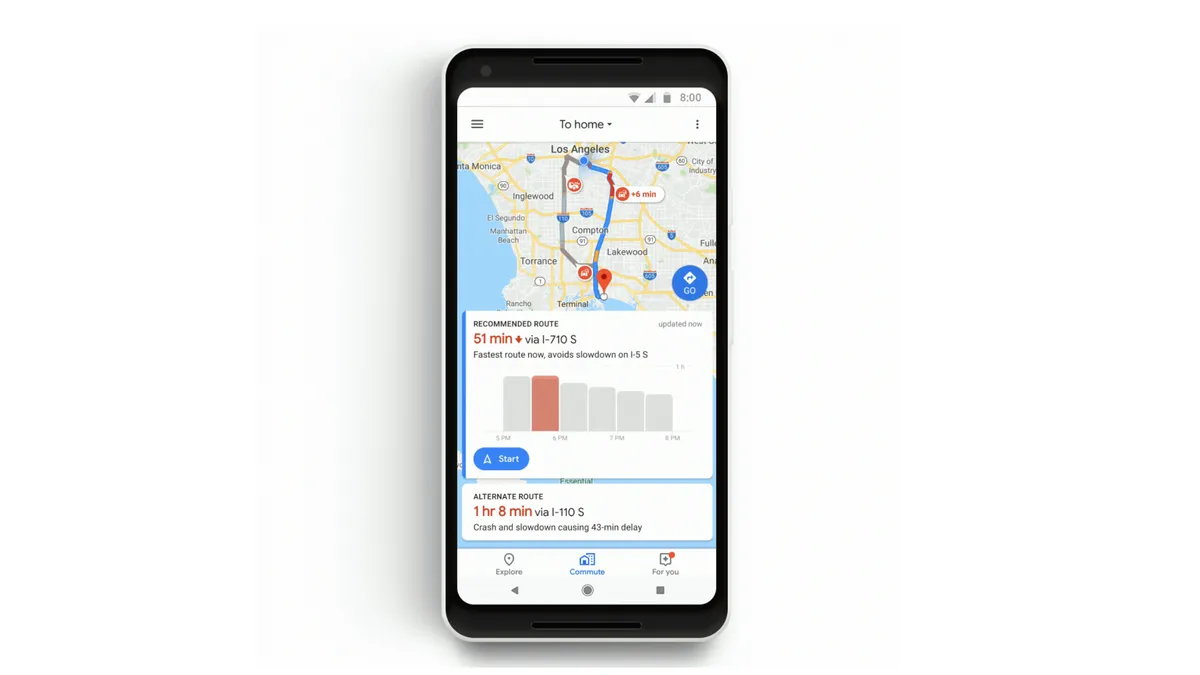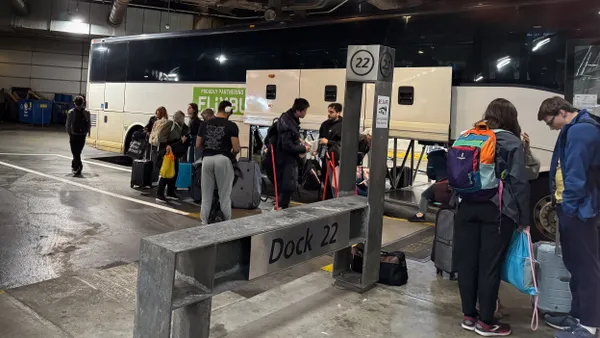Dive Brief:
- Google Maps is adding a suite of new features designed to help users plan more efficient and less stressful commutes, including real-time information about potential delays and suggested alternate routes, the company announced in a blog post.
- The new tab will pull up traffic and transit information customized to the user’s normal commute. The app will also support multi-modal commutes — in 80 cities, the app will give information on the next train and bus, and a final estimated arrival time for a multi-step trip to let users know when they’ll arrive at the office.
- To reduce distractions, the update will also allow users to control Spotify, Apple Music and Google Play Music directly from Google Maps.
Dive Insight:
According to data from the U.S. Census Bureau’s annual American Community Survey, the average one-way commute was 26.9 minutes last year, up from 26.6 minutes in 2016. That increase adds up to an additional 2.5 hours last year. Of those commuters, 85.3% drove to work, with 76.4% driving alone. That’s 2 million more than the prior year (by comparison, the number of carpoolers only rose 27,000 between 2016 and 2017), accompanied by a dip of 12,000 public transit riders from the previous year.
The transit information in Google’s app isn’t necessarily new — individual transit apps have offered real-time train and bus information for years — but it puts all the information in one place. In Sydney, the transit information will even go a step further. Thanks to a partnership with Transport New South Wales, the app will show how full the next bus or train is, so users can know if they’ll get a seat. That feature will roll out to other cities around the world soon, adding an important bit of information about the convenience and comfort of a commute.
Public transit agencies have been trying to get more information out; a partnership with Lyft now displays some transit information in the app to give riders another alternative to traveling in a car. The new information in Google Maps will help take away some of the uncertainty that may be keeping commuters away from public transit, where unpredictable delays can strand them for valuable minutes or even hours.
Even for drivers, the upgrades should help reduce delays by giving commuters alternate routes to help them avoid already-congested roadways, or giving them information to help avoid busy travel times altogether.











